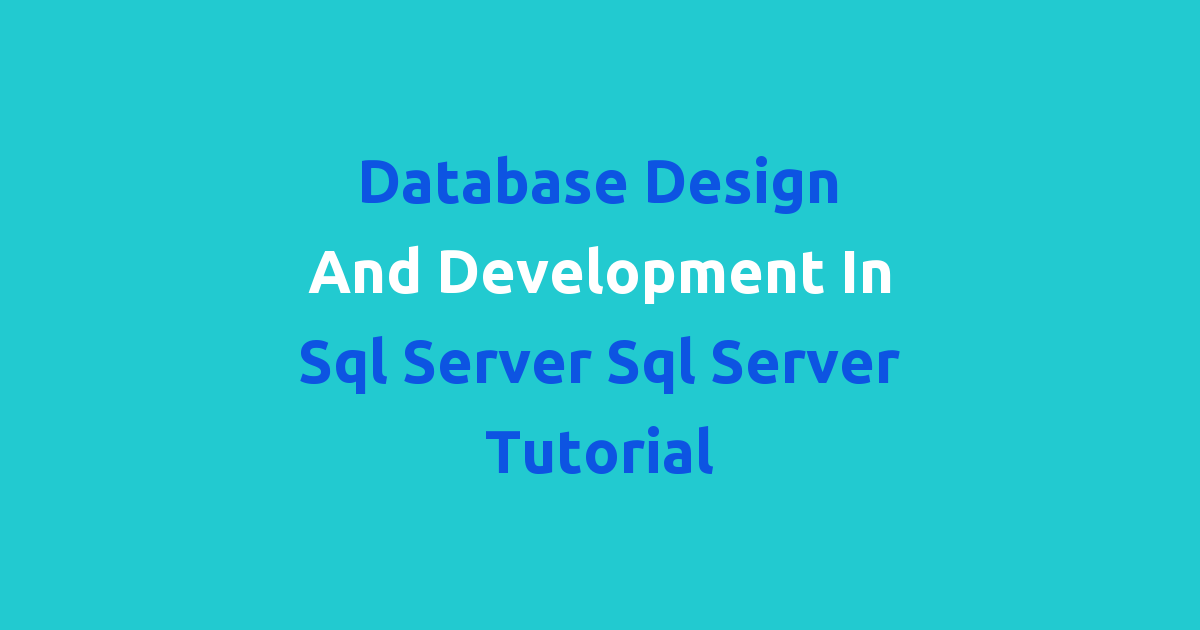SQL server tutorial for database design and development in SQL Server.
Database Design and Development in SQL Server
Introduction:
In today’s digital world, data plays a crucial role in decision-making processes in various industries. Database management systems like SQL Server have become essential tools for storing and managing large volumes of data efficiently. This project focuses on the design and development of a database system using SQL Server for an engineering college in India.
Problem Statement:
The existing system at the engineering college relies on manual data entry and spreadsheets to manage student records, course information, and faculty details. This manual process is prone to errors, lacks data integrity, and is time-consuming. The college administration is looking for a more systematic and automated solution to manage their data effectively.
Existing System:
The current system at the engineering college involves maintaining separate spreadsheets for student records, course details, and faculty information. This decentralized approach leads to data redundancy, inconsistency, and duplication. The lack of a centralized database system makes it difficult to retrieve information quickly and accurately.
Disadvantages of the Existing System:
1. Manual data entry is time-consuming and error-prone.
2. Data redundancy and inconsistency due to decentralized storage of information.
3. Limited data security and integrity measures.
4. Difficulty in retrieving information quickly and accurately.
5. Inefficient data management processes.
Proposed System:
The proposed system involves designing and developing a centralized database using SQL Server to store and manage student records, course details, and faculty information. This database system will provide a more efficient and automated solution for the engineering college to manage their data effectively.
Advantages of the Proposed System:
1. Centralized storage of data for easy access and retrieval.
2. Increased data security and integrity measures.
3. Automated data management processes.
4. Improved data consistency and accuracy.
5. Efficient handling of large volumes of data.
Features of the Database System:
1. Student Module: This module will store student details such as name, roll number, course enrolled, and contact information.
2. Course Module: This module will maintain course information like course code, course name, faculty assigned, and semester details.
3. Faculty Module: This module will store faculty details including name, qualifications, department, and contact information.
4. Attendance Module: This module will track student attendance for each course and generate reports.
5. Results Module: This module will store student results for each semester and calculate GPA.
6. Admin Module: This module will manage user roles, access rights, and database maintenance tasks.
Conclusion:
In conclusion, the design and development of a database system using SQL Server for an engineering college in India will provide a more efficient and automated solution for managing student records, course details, and faculty information. The proposed system addresses the limitations of the existing system and offers a centralized approach to data management. By implementing this database system, the college administration can improve data security, integrity, and efficiency in their day-to-day operations.

